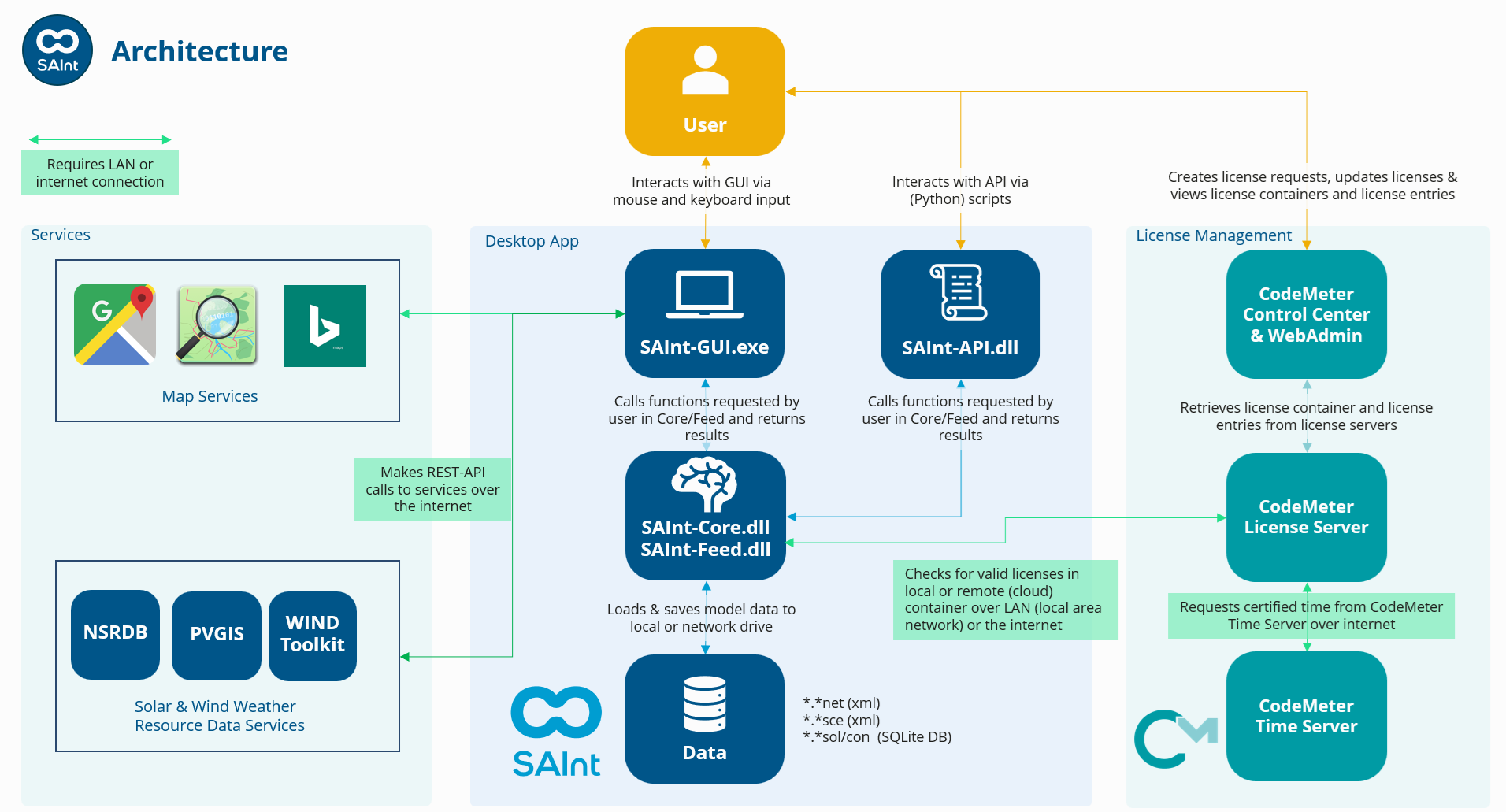SAInt’s Software Architecture
The architectural diagram of SAInt outlines how various components interact within the application (Figure 1). SAInt operates as an on-premise desktop application using .NET technology (https://learn.microsoft.com/en-us/dotnet) and allows interaction through both a Graphical User Interface (GUI) and an Application Programming Interface (API). Core libraries such as SAInt-Core.dll and SAInt-Feed.dll manage backend processes and data manipulation. Furthermore, SAInt integrates with commercial and open-source map services, ensuring you have comprehensive geographical data at your fingertips.

One of SAInt’s key features is its integration with external services for historical wind and solar weather resource data. This integration leverages databases such as the National Renewable Energy Laboratory’s (NREL) National Solar Radiation Database (NSRDB) and WIND Toolkit, alongside the European Commission’s Photovoltaic Geographical Information System (PVGIS). These resources are crucial for accurate and detailed energy planning, enabling users to incorporate real-world weather data into their scenario analyses.
To ensure seamless license management, SAInt employs the CodeMeter suite, a software protection and license management tool from WIBU-SYSTEMS AG (https://www.wibu.com). This suite allows users to manage their licenses through applications like CodeMeter Control Center and WebAdmin. Services such as CodeMeter License Server and CodeMeter Time Server help maintain license validity and synchronization.